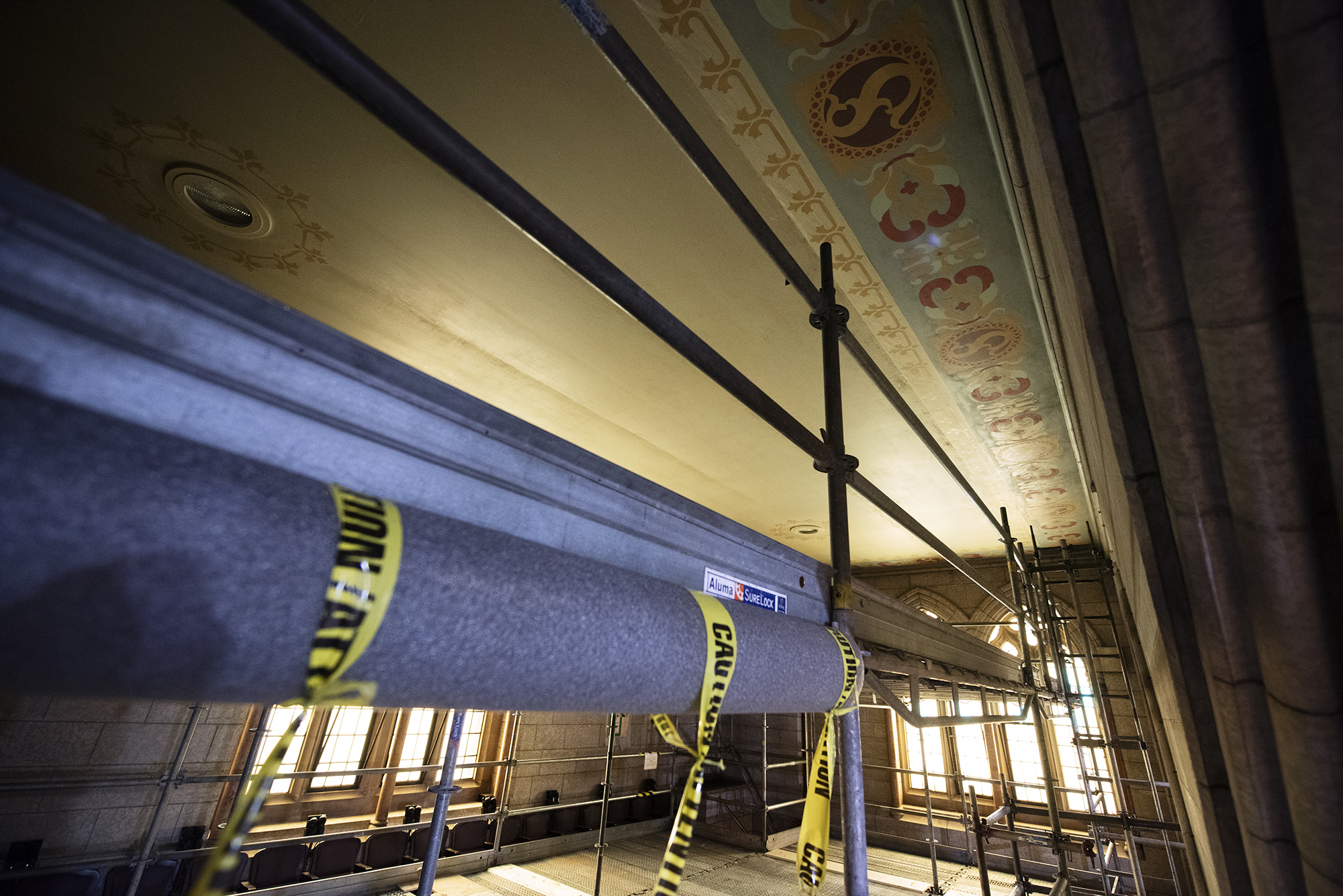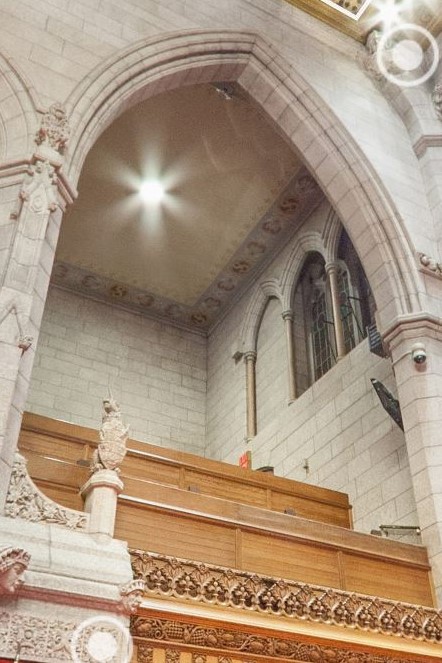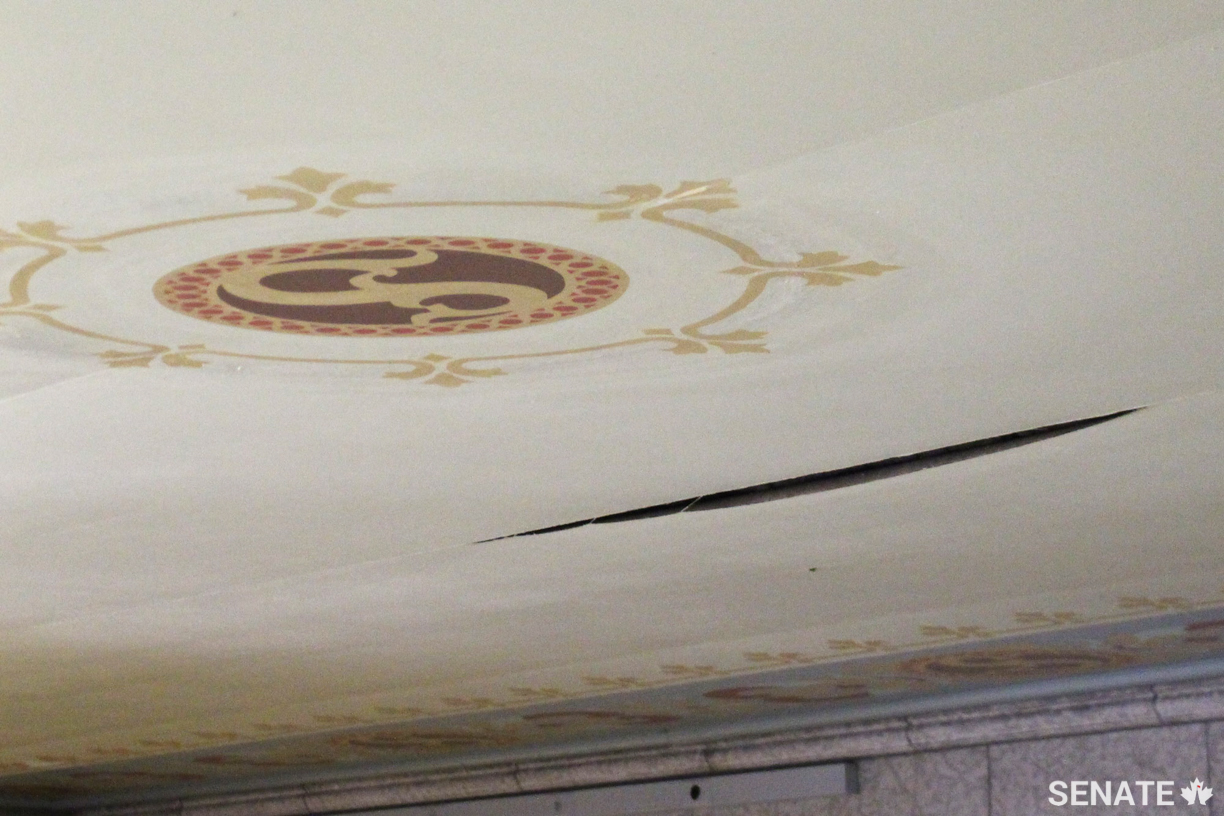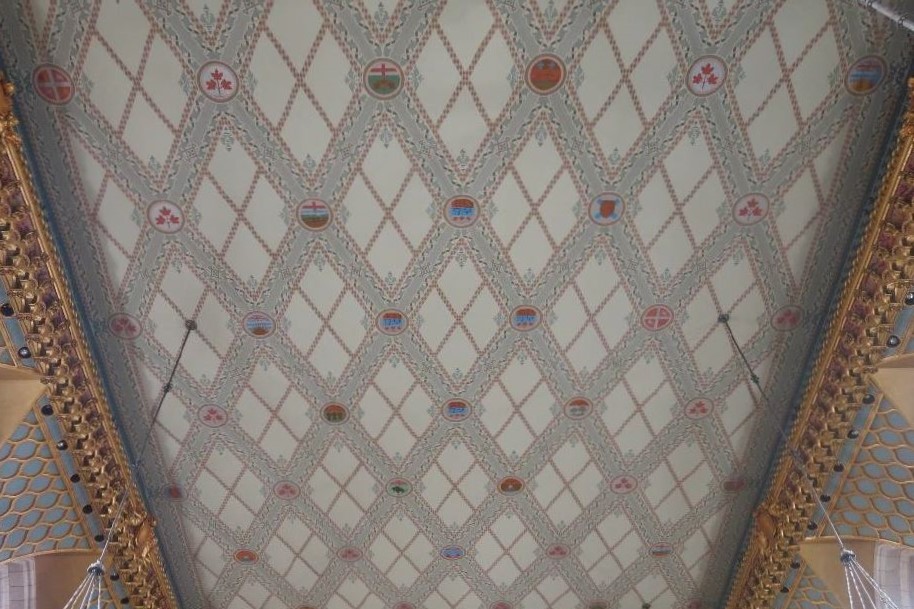A Clean Sheet: Conserving the Senate’s linen ceilings

In February 2019, the Senate moved to the Senate of Canada Building, a former train station built in 1912. The Senate will occupy this temporary location while Parliament’s Centre Block — the Senate’s permanent home — is rehabilitated.
Although Centre Block is shuttered for rehabilitation work, Canadians can still experience its art and architecture through the Senate’s immersive virtual tour.
Tucked behind the Senate Chamber’s magnificent coffered ceiling in Centre Block is an architectural gem that’s often overshadowed by the gilded glory of its showier neighbour.
A painted expanse of linen floats above the Chamber’s north gallery, its subtle splendour a feat of engineering and craftsmanship.
Adorned by a border of regal symbols in muted colours, the linen ceiling was suspended over the gallery in several strips more than a century ago to hover over visitors and members of the press watching proceedings from the balcony above the Speaker’s chair.
Deemed too fragile to keep in place during Centre Block’s restoration, conservators have taken it down using a similar technique they employed to remove the war paintings that hung in the Senate Chamber and, more recently, the linen ceilings in the House of Commons.

A history of Centre Block’s linen ceilings
Centre Block architect John A. Pearson used Gothic Revival architecture and employed one of the most important architectural innovations of the Middle Ages to beautify both chambers in a way that suited the 20th-century building.
That innovation? The ceiling.
Prior to the Gothic period, rooms were open to the rafters. A ceiling created a new opportunity for décor.
Suspended, gilded plaster coffers painted with national symbols and references to the Crown were the choice in the Senate’s main Chamber.
Painted linen was chosen for other ceiling spaces in Centre Block, including the Senate’s galleries and the House of Commons.
The ceilings were designed by Mack, Jenney & Tyler of New York and share an understated colour palette. They feature provincial symbols and lattice stencilling that conceals the seams between the bolts of linen.
The company painted and assembled the linen ceiling panels of Centre Block in studio and then installed them as a single piece, using hoists instead of scaffolding, in 1920.
Horsehair mats were also used to fill the space between the plaster ceiling and the linen sheets, suggesting the first votes in both chambers were neighs.
An enterprising solution
The method for removing the linen ceilings in the Senate was an adaptation of an enterprising solution used to take down the Senate Chamber war paintings.
Watch the removal of the war paintings from the Senate Chamber:
Conservators started by stabilizing the painted layer of the linen canvas and applying a protective facing where necessary.
Scaffolding held equipment including a hoist and rolling system that moved metre by metre as the ceiling was removed.
Sections of the ceiling were carefully cut along their seams and lowered onto support hoists and rolling tables.
The backs were vacuumed to remove dust and debris before the canvas was rolled onto reinforced Sonotubes — hollow cardboard spools used for various construction projects. Mylar interleaf protects the paint layer during storage.
The rolled-up ceiling is now sealed in plastic sheeting and on its way to a climate-controlled facility, where it will be carefully examined to determine how best to conserve it.





